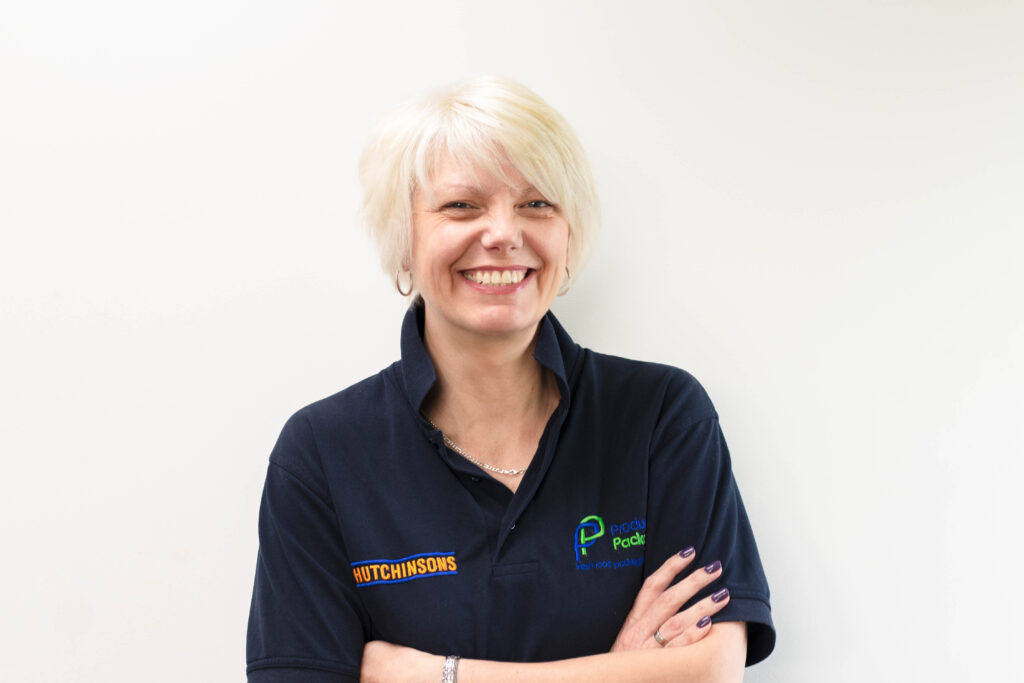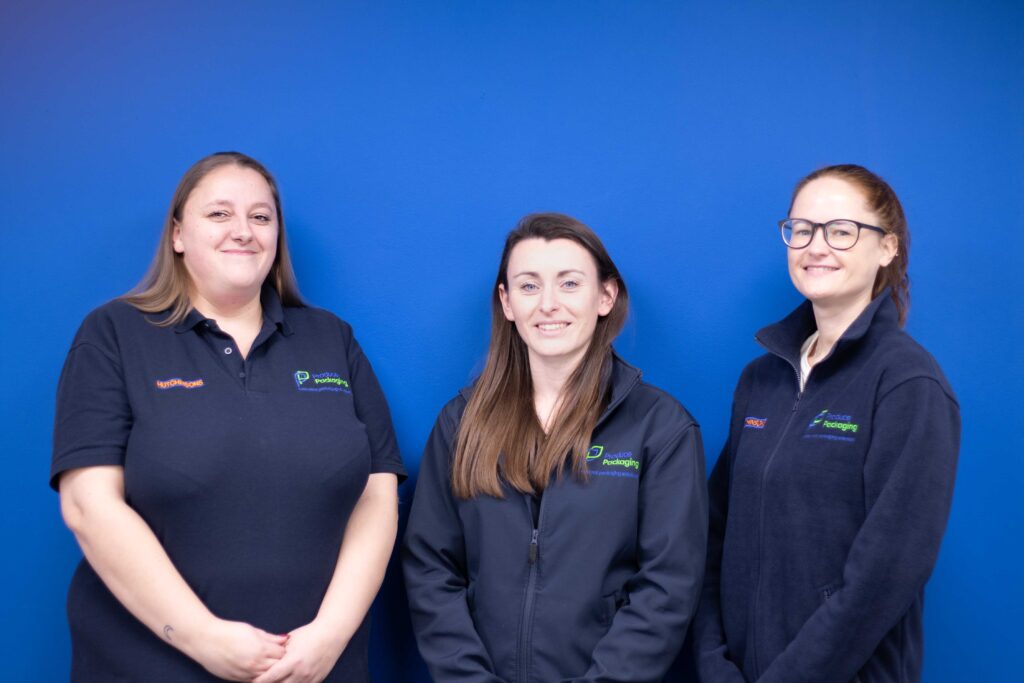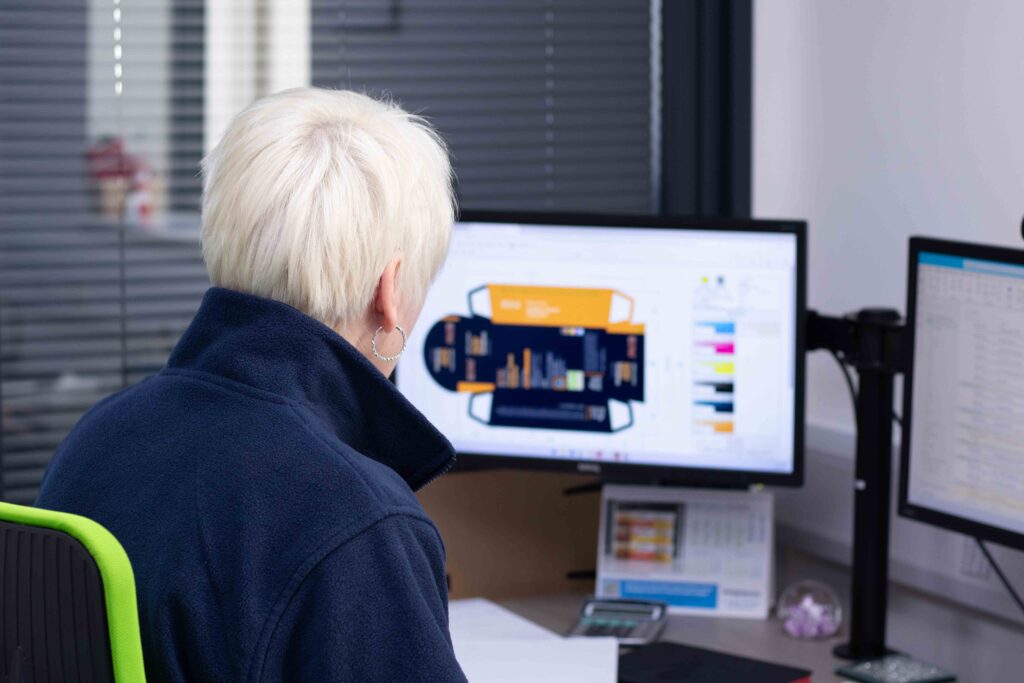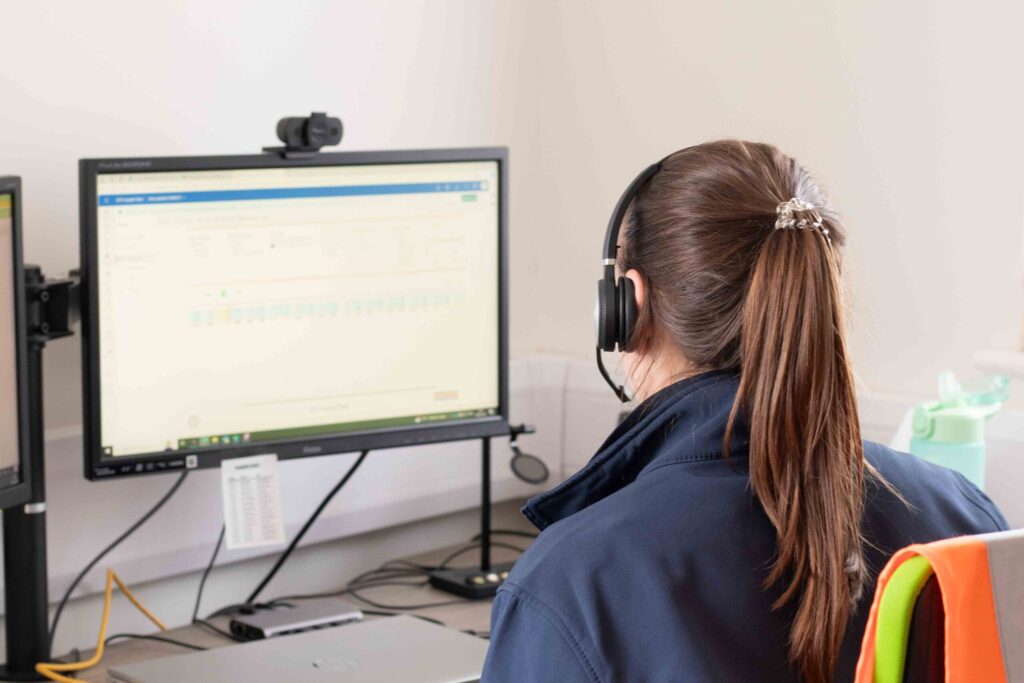Stocked and Ready: The Buying Team Behind Produce Packaging
In this interview with Produce Packaging's Buying Manager, we dive into how the team keeps things running smoothly, builds strong supplier relationships, and ensures top-quality products for our customers. ...
At Produce Packaging, making sure our customers have the right packaging when they need it is what we do best. Behind the scenes, our dedicated buying team—spread across the country—works hard to keep our stock levels just right, sourcing high-quality, innovative, and sustainable packaging. But what does that really look like day to day? We caught up with our Buying Manager, Denise Powell, to chat about the challenges of procurement, industry trends, and how our team keeps everything running smoothly (so you don’t have to worry about a thing!).

Buying Manager, Denise Powell

Supply Chain Coordinators, April Ramsden, Claire Mealing and Sanda Priede
Q: In a nutshell, what does a purchasing team and, more specifically, a buying manager do?
A: Our primary role is to support the sales team by ensuring we procure high-quality products at the best possible price while maintaining optimal availability. The buying manager oversees this process, providing guidance to the purchasing team, managing supplier relationships, and ensuring that all parties operate efficiently and effectively to meet business needs.
Q: Produce Packaging has a full-time dedicated purchasing team. How does this contribute to our competitive advantage? What benefits are passed on to customers as a result?
A: Unlike businesses where sales representatives place individual orders, our dedicated purchasing team consolidates customer volumes nationwide. This approach strengthens our purchasing power, allowing us to secure better pricing and enhanced product availability. Each supplier is assigned to a supply chain coordinator who builds strong relationships with manufacturers, understands pricing thresholds, and negotiates the most competitive purchase terms.
Additionally, we regularly forecast demand for high-volume products, ensuring they are strategically positioned at the right depot when customers need them. In most cases, this means the product is available in the right location at the right time. We also maintain a buffer of excess stock to accommodate unexpected demand fluctuations, providing our customers with greater reliability and flexibility.
Q: What goes into building strong relationships with suppliers? How does this change as you add more people to the team?
A: Building strong supplier relationships goes beyond just placing orders—it involves providing valuable market insights and accurate forecasting. We not only share projected volumes but also offer updates on market activity. For example, if a particular fruit category, such as top fruit or soft fruit, is experiencing an unexpectedly strong or weak season, we pass that information along. This is particularly crucial for products like top fruit, where size variations impact packaging needs. By identifying size trends early, we can alert suppliers and refine our forecasts to ensure the right packaging solutions, such as cavity trays and liners, are available when needed.
As a distributor, we also simplify operations for our suppliers by streamlining administrative tasks. Instead of managing multiple customer accounts and contact points, suppliers work with a single, dedicated team. They send invoices to one place and coordinate with a team of four rather than hundreds of individual customers. At the same time, we continue to manage customer expectations and oversee delivery scheduling, ensuring efficiency for both suppliers and customers. As our team grows, this structured approach allows us to maintain strong supplier relationships while scaling effectively.
Q: As a buying manager, how do you manage risk in the supply chain?
A: Managing supply chain risk requires a dual approach. First, we ensure stock availability across our three depot locations, allowing us to maintain consistent supply levels. This is especially critical when importing goods, as international shipping delays can vary depending on the region. By incorporating early forecasting and holding stock at our depots, we can mitigate disruptions and ensure products are readily available when customers need them. In some cases, we may need to adjust order volumes, but our proactive approach helps minimise shortages.
Second, our strong supplier relationships play a key role in risk management. Open communication allows us to anticipate potential supply issues before they arise. For example, during the Covid period, suppliers informed us in advance about material shortages, enabling us to increase order volumes and stockpile inventory to counteract port delays. Our UK warehouse capacity further strengthens our ability to manage supply fluctuations, giving us a competitive advantage over businesses with more limited storage options.
Q: One of Produce Packaging’s core values is sustainability with a strong commitment to the environment. How do you prioritise sustainability in purchasing?
A: Sustainability is at the forefront of our purchasing strategy, and we actively work to minimise the environmental impact of our supply chain. One key focus is reducing unnecessary transportation miles. Wherever possible, we deliver products directly to the main depot they will be distributed from, then supply depots that sell smaller volumes as needed. We also prioritise sourcing from geographically close suppliers to reduce transport emissions, always opting for UK-based suppliers when viable before looking further afield.
In addition, we favour products with well-established waste and recycling streams, ensuring they align with our commitment to a circular economy. Many of our suppliers operate on a closed-loop model, utilising both their own production waste and post-consumer materials to create sustainable packaging solutions. Partnering with suppliers who have a clear, responsible approach to sustainability is essential to maintaining our environmental commitments.
Q: What are the challenges of purchasing within the fresh produce market? What do you do to prepare for/combat these challenges?
A: The fresh produce market is heavily influenced by weather conditions, requiring us to forecast demand well in advance of peak seasons. One of the biggest challenges is accurately predicting how a season will unfold. To mitigate this, we analyse long-range weather forecasts and adjust our packaging projections accordingly. Staying informed and maintaining close market awareness is crucial to adapting to unpredictable conditions.
We also rely on insights from our sales team, who have strong relationships with customers and can provide early indications of expected volumes. By gathering this information, we can refine our forecasts and align our purchasing strategy with market demand.
Another challenge is the short-notice promotional activity within retailers, which can lead to sudden spikes in demand. If we learn that a supermarket is launching a promotion, we anticipate increased orders from multiple customers supplying that retailer and adjust stock levels proactively. Our approach is a combination of careful planning and the agility to react swiftly to industry changes. Fortunately, our strong supplier relationships enable us to respond effectively to time-sensitive market fluctuations, ensuring we can meet customer needs without disruption.

Buying Manager, Denise Powell, reviewing customer artwork.

Supply Chain Coordinator, Claire Mealing, reviewing stock levels across all depots.
Q: How does the purchasing team collaborate with other departments within the business? How do you build processes that support this collaboration?
A: Collaboration across departments is essential to ensuring a smooth and efficient supply chain. Naturally, we work closely with the sales team to align purchasing decisions with customer demand. In addition, daily communication with our warehouse teams is crucial for understanding storage capacity and managing stock levels effectively. We maintain this coordination through a daily operations call, allowing us to stay updated on space availability and logistical considerations.
We also work in tandem with the customer service team, providing updates on potential delays or sudden increases in demand identified through our sales team. Maintaining open communication with all departments enables us to track a product through its entire lifecycle, ensuring seamless operations from procurement to final delivery. By fostering strong internal processes and regular touchpoints, we create a collaborative environment that allows the business to adapt quickly and operate efficiently.
Q: What role does the purchasing department play in the development of bespoke products?
A: The purchasing team plays a key role in the development of bespoke products, working closely with the marketing department to coordinate artwork and branding. The expansion of our marketing team has significantly improved the efficiency of launching new printed packaging for customers.
Strong supplier relationships are also critical in this process. When a bespoke product inquiry comes in, we leverage our knowledge of supplier capabilities and capacities to determine the best manufacturing partner. Given the tight timelines often associated with supplying the retail market, we focus on quick turnarounds without compromising on quality. While competitive pricing is always a priority, ensuring product quality and supplier reliability remains at the core of our decision-making process, ensuring that our customers receive the best possible packaging solutions.
Q: How do we vet suppliers to make sure they’re meeting the same standards we’re holding ourselves to?
A: The first and most important factor we look for is BRCGS accreditation, as it demonstrates a supplier’s commitment to quality and safety standards. We also assess their credibility by reviewing their existing customer base and evaluating their track record.
Beyond certifications, we conduct our own due diligence—examining product samples in a retail environment, reviewing testimonials, and testing any samples provided. Capacity is another key consideration; we need to ensure that a supplier can meet our volume requirements consistently without compromising on quality or reliability. By taking a thorough and structured approach, we ensure that every supplier aligns with our standards and can support our customers effectively.
Q: What skills are crucial to being a successful purchasing professional? How would you encourage people to develop these skills?
A: A successful purchasing professional must remain calm under pressure, particularly when supply chain challenges arise. Strong relationship-building skills are also key—both internally with colleagues and externally with suppliers. Our team excels at understanding the challenges faced by customers, suppliers, and internal departments, and effectively communicating across all levels to resolve issues.
To develop these skills, I would encourage people to dive in and gain hands-on experience. This role suits individuals who enjoy navigating uncertainty and are comfortable with dynamic, fast-paced environments. Those who excel in this field are often natural problem solvers, able to manage multiple factors and adapt to changing circumstances. It’s about embracing the unknown and being ready to tackle challenges head-on.
Q: How have technology advancements improved the purchasing team’s capacity?
A: Technology advancements, particularly in stock management software, have significantly enhanced the purchasing team’s efficiency. This software serves as the backbone of our operations, streamlining order processing, product management, and overall workflow. Our IT team has been instrumental in tailoring the system to meet our specific needs, ensuring it supports both operational efficiency and customer service.
Thanks to these advancements, we now have real-time access to critical data on incoming goods, which reduces the need for manual cross-checking and minimises errors. Overall, technology has empowered us to run more efficiently and independently, allowing us to focus on value-added activities while maintaining smooth, reliable operations.
The dedicated efforts of Produce Packaging’s buying team play a pivotal role in ensuring that we consistently meet the needs of our customers while maintaining high standards of quality and efficiency. By leveraging strong supplier relationships, advanced technology, and a proactive approach to risk management and sustainability, our team is well-equipped to navigate the complexities of the market.
Whether you’re a potential supplier looking to collaborate or a customer in need of tailored packaging solutions, we invite you to get in touch with our team. Please fill out our contact form to get in contact with us!
